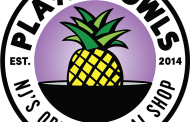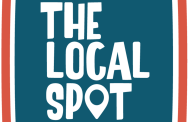Apex is buzzing with activity, but not just the hustle and bustle of people going about their lives. No, this activity is all about pollinators—bees and other creatures that help spread pollen and play a crucial role in our food supply.
Apex is an official Bee City USA community, among 30 in N.C., and over 200 across the United States all working to support pollinator populations that are in decline, especially bees.
This special designation was earned in 2020 and included the town council passing a resolution committing to pollinator conservation and related community activities. Creating a pollinator garden, beekeeping and an upcoming June 20 event celebrating these important creatures are just a few of the fun and engaging ways the town is keeping its promise.
“To bring residents together to make better places for pollinators—that’s really the town’s big goal,” said David Wood, assistant director of the town’s parks, recreation and cultural resources department. “All these projects and initiatives support that.”
The Bee City USA program was founded in Asheville, N.C., in 2012 and includes a sister program, Bee Campus USA, with more than 180 affiliates including N.C. State University and University of North Carolina-Chapel Hill. Both programs are now initiatives of Xerces Society for Invertebrate Conservation, an Oregon-based, non-profit organization founded in 1971 with a similar conservation and education mission. Its namesake is the extinct Xerces blue butterfly.
Bees and Bites—Why Pollinators Matter
Pollinators encompass a large group of insects and animals, including bees, butterflies, moths, birds, bats and beetles. They all play an important role in the environment and our economy, but bees top the list.
“You see reports that one of every three bites you take is a direct result of bees pollinating a food source,” said Wood.
In the U.S., about 75% of the fruits, nuts, and vegetables we eat depend on bees to reproduce, based on research by the U.S. Department of Agriculture (USDA).
In simplistic terms, most of our food comes from flowering plants. So, when a pollinator, such as a bee, is going about its business looking for its own food (nectar and pollen), it inadvertently picks up pollen from the male part of a flower and moves it to the female part. Once the flower is pollinated, fertilization can happen resulting in a fruit with seeds.
Tiny, little bees are ultimately responsible for helping feed the masses. Apples, potatoes, watermelons and strawberries are a few in a long list of pollinator-dependent crops in the U.S. Economy-wise, the USDA estimates bee pollination is responsible for more than $15 billion in added crop value each year.
Giving Bees a Boost
Over the years, pollinators, especially bees, have suffered habitat loss, disease and declining populations. Under the Bee City USA umbrella, Apex is helping pollinators through programming that focuses on habitat building and conservation, community engagement, awareness and educational resources.
“Native bees and the European honey bees are thought to be in pretty significant decline,” said Wood. “Recognizing that, we want to do our part in Apex to help.”
Currently, the town has a six-member, citizen Bee City committee, which works on initiatives with the town’s environmental advisory board. Wood sees the committee evolving into a much larger, volunteer group for residents.
Ellison Lambert, the volunteer coordinator for the parks department, will help develop this group and plan special community events.
For instance, the town will celebrate National Pollinator Week (June 17-23) on June 20. Plans include illuminating the Hunter Street water tower near Town Hall with yellow lights. A collection of activities is planned from 5-7 p.m. at the Apex Nature Park shelter near the playground and the Seymour Athletic Fields.
The event promises something for all ages, including a honey tasting, a children’s story hour, and building a bee “hotel.” The hotels, which look like bird houses, are filled with small tubular openings mason bees can use for nesting. A nature walk through the town’s pollinator garden along with tips for creating your own is also planned.
The town’s pollinator garden, which is located just past the park’s tennis courts, was one of the first projects completed after earning the Bee City USA designation. The garden was created in 2022 with help from Girl Scout Troop 779 and the Apex Garden Club. The bee hotels dotting the planting beds were made by members of Girl Scout Troop 970.
Wood hopes the garden will help inspire homeowners to realize they could do this in their own yard. “You don’t have to do a lot to provide a pollinator habitat,” he said.
The garden features a winding path with a variety of plants that bees, butterflies and other pollinators love, such as coneflowers, scarlet beebalm and stokes aster. The garden is designed to provide pollinators food and a habitat through all seasons.
“We try to have things in our garden that are blooming in spring, summer and fall.” Wood said. “It’s important for bees to have a source of that kind of food year-round. Even in the winter, it’s also important. Even though you don’t have nectar sources, a lot of the native bees will use the stems of plants to overwinter and lay eggs in.”
When it comes to bee pollinators, Wood pointed out people often only think of European honey bees, which are a non-native species that beekeepers, like himself, raise in special hive boxes. European honey bees are important bee pollinators, but not the only ones.
Mason bees, for example, are among the approximately 4,000 species of native bees in the U.S., according to the USDA. Unlike European honey bees and bumble bees, which are social bees that live in groups, native bees are generally solitary. Most nest alone in small, hollow spaces and abandoned ground burrows.
Walking the Talk
In addition to creating resident-focused activities, Apex has put habitat supportive practices in place. For instance, the town is following integrated pest management. Wood described this as a combination of strategies that minimize the impact on pollinators, such as trying to use more non-pesticide practices and products.
Another example is keeping the land natural along utility right of ways in unpopulated areas. As Wood pointed out, two out of three native bees nest in the ground, so mowing destroys their habitat.
The town’s electric utility department maintains the right of way and staff members are doing their part to join in the Bee City USA efforts. Phillip Barnes, a powerline forester with the town, came up with the idea for the department’s work to include pollinator conservation and his director, Eric Neumann, was all for it.
“I have taken from nature over the years—cutting right of ways for electrical expansion,” Barnes said. “Just wanted to give back what we can and where we can.”
Barnes said the crews are avoiding mowing in appropriate areas and throwing out seeds for pollinator plants native to N.C. Department employees have also hung bee hotels on some utility poles with plans to add more.
Barnes and fellow staff member Fred Locklear, along with Trevor Johnson and Mark Siburt of the town’s planning department, are also beekeepers and maintain some honey bee hive boxes within protected substation areas on behalf of the town. In addition to helping a pollinator species, a fun added bonus is sharing their honey with town employees and handing out straws of honey at community events.
What’s Blooming for the Future
Those involved in the Bee City USA efforts are excited about the initiative and its future.
“I see Bee City as being an educational opportunity for people who live in Apex,” said Kaitlin Hartman, who is chairperson of the Bee City committee.
Hartman believes awareness about pollinators is growing and people are showing more interest in getting involved.
“I encourage people to come out to the events Apex is putting on and learning more and gardening more. We each have a role to play even if we only have a 1/10th of an acre lot or just a container pot.”
Wood envisions more gardens and expanded programming. “We have so many public areas…my vision is to have multiple pollinator habitats throughout the town-owned right of ways and parks.”
He also pointed out plans for a Bee City USA section on the town’s website with resources for residents, such as tips on pollinator-friendly plants and yard maintenance practices. And, the parks department hopes to develop a program to recognize the pollinator-friendly gardens and yards of residents with special signage.
Lambert plans to organize more volunteer events like the spring-cleaning workday the Apex Youth Council held at the town’s pollinator garden in April.
“I’m excited to collaborate with our staff and volunteers to continue highlighting Apex’s pollinator-friendly practices and spaces,” she said.
Making Meals for Pollinators at Your Home
An easy way for Apex residents to get involved is adding pollinator-friendly plants to their yards and containers. To make it super simple, the National Park Service has a downloadable and printable “recipe card” for creating a small pollinator garden with a mix of native plants specific to North Carolina. And, the U.S. Forest Service has a handy online chart outlining “pollinator syndrome traits,” which is what attracts various pollinators to plants. Here are some highlights for picking just the right flowering plants:
Look for brightly colored, fragrant flowers: Both of these traits serve as beacons calling out, “Come here for nectar!” Bees are attracted to reds, yellows, purples and blues. Patterns on blooms, like those of the red and yellow blanket flower, also lure bees in and direct them to a flower’s nectar source.
Consider the flower shape: Bees like flowers with shallow blooms and sturdy landing areas, such as black-eyed Susans and coneflowers. These are popular among bees and butterflies thanks to their strong stems and large, nectar-filled centers. In addition to wide landing areas, butterflies also like tubular or trumpet-shaped blooms, such as those on salvia and Joe Pye weed. Cardinal flowers and other plants with long funnel-shaped blooms are perfect for hummingbirds that use their long bill and tongue to get nectar.
Sun vs shade-loving plants: Bees and other pollinators are early risers! They are especially active in the morning and in bright sunlight, so they gravitate to sun-loving plants. Pollinators will still visit shady yards if something is blooming, such as hostas and coral bells.
Provide a steady food supply: Fill your garden and container pots with plants that bloom spring through fall. This way, a constant food source is maintained for pollinators.
Use native N.C. plants: Bees native to an area rely on the specific nectar and pollen from plants native to the same area. Some native plants suggested by the N.C. Cooperative Extension include wild indigo, bee balm, foxglove beardtongue, milkweed, great blue lobelia, asters, goldenrod, coneflowers and buttonbush.
Where to Learn More
For more details about how Apex is celebrating National Pollinator Week, contact Ellison Lambert, volunteer coordinator with the Apex Parks, Recreation and Cultural Resources Department (Ellison.Lambert@apexnc.org).
To learn more about pollinators, tap the vast resources available through government agencies and the N.C. Cooperative Extension. The extension websites offer a wealth of information on pollinator-friendly plants, bee keeping, and other related resources. Residents can also contact extension agents who specialize in topics such as gardening and horticulture. The extension service is a national partnership between the USDA and a network of land grant universities that provide free resources and education through local, county-based, extension offices. N.C. is served by N.C. State University and N.C. A&T State University. Locally, Apex falls under the Wake County extension office.
N.C. Cooperative Extension
www.ces.ncsu.edu
919-515-2811
Wake County Extension Office
www.wake.ces.ncsu.edu
910-250-1100
National Park Service, Native Pollinator Garden Recipe Cards
https://www.nps.gov/subjects/pollinators/ecoregional-planting-guide-cards.htm
U.S. Forestry Service, Pollinator Syndrome Traits
https://www.fs.usda.gov/managing-land/wildflowers/pollinators/syndromes.








